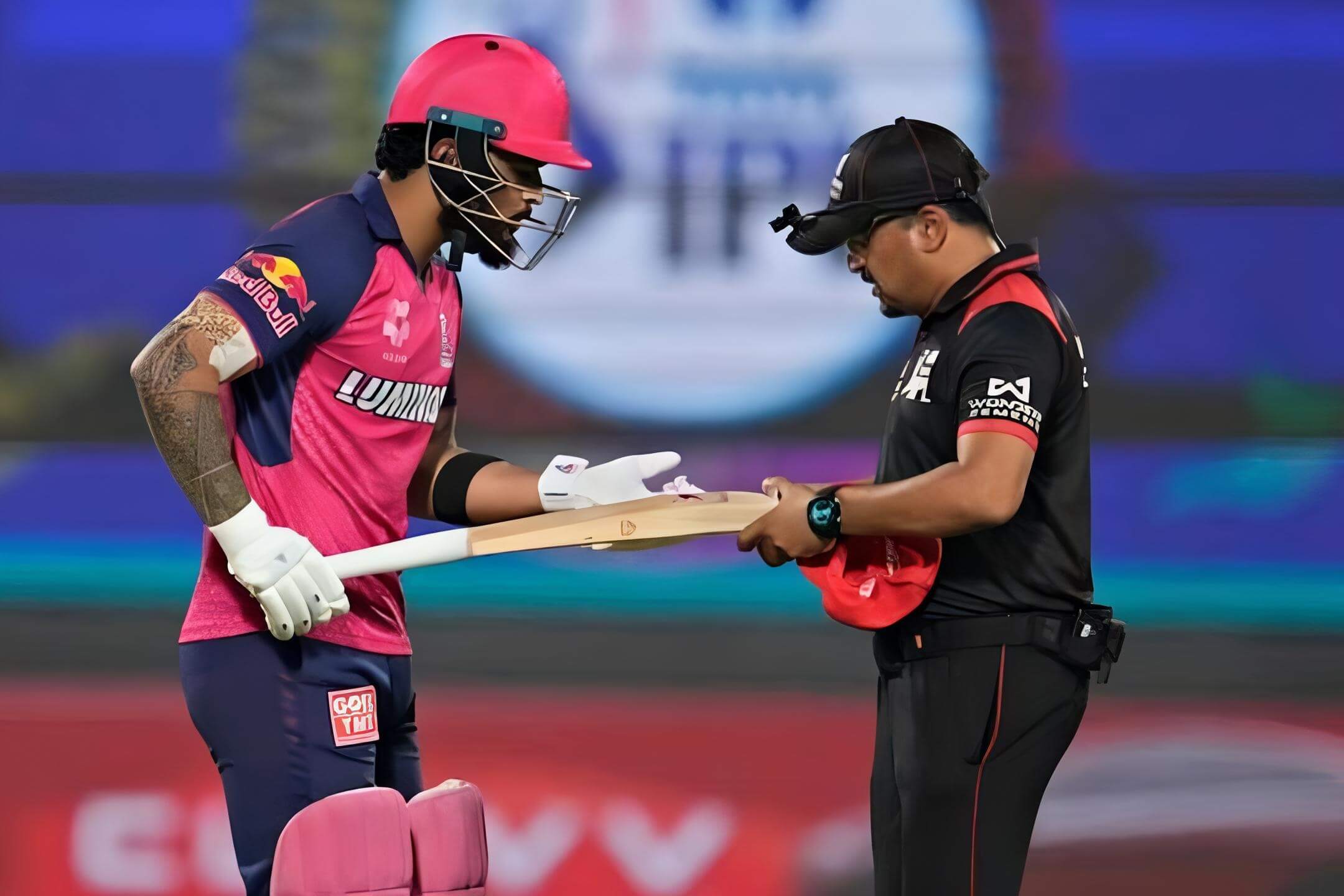IPL 2025: Why the League is Cracking Down on Oversized Bats
The 2025 season of the Indian Premier League (IPL) has introduced a significant change mid-season that has caught many players and fans off guard—the sudden enforcement of bat size regulations. On April 13, 2025, match officials began checking bats during games using a specially designed bat gauge. While the IPL has not released an official statement explaining the move, the shift is clearly aimed at preserving fairness and balance between bat and ball.
Here’s a deep dive into the new bat-check policy, how it works, why it was introduced, and what it means for players and teams.
READ ALSO –
⸻
1. The Sudden Enforcement: What Changed in IPL 2025?
For the first time in IPL history, on-field umpires are now inspecting bats during live matches using a standardized gauge. This is a marked departure from the past, where checks were irregular and done before the match, often during training, and on a random selection of bats—sometimes even on players who wouldn’t feature in the playing XI.
⸻
2. Why Has IPL Started Checking Bat Sizes Mid-Season?
According to sources from ESPNcricinfo, this move has been made to plug loopholes in the previous bat-checking protocol. In earlier seasons, a player could have one bat inspected and then use a different, potentially oversized, bat on match day. Concerns had been privately raised by match officials about certain players using bats with unusually thick edges or deep profiles.
By implementing live bat checks, the IPL aims to ensure a level playing field, especially in an era where bowlers are already under pressure due to flat pitches and power-hitting techniques.
3. The Legal Limits of a Cricket Bat: MCC Law 5
This crackdown is based on Law 5 of the MCC’s Laws of Cricket, which defines the legal dimensions for a cricket bat:
• Maximum edge thickness: 4cm (1.56 inches)
• Maximum overall depth: 6.7cm (2.64 inches)
• Maximum width: 10.8cm (4.25 inches)
These laws were officially adopted by the IPL in their playing conditions, aligning with international standards also enforced in leagues such as the ECB’s domestic competitions.
⸻
4. The Role of the Bat Gauge
The gauge used is a rectangular tool with a house-shaped cut-out, designed to test whether the bat can legally pass through. If a bat fails to slide through the gauge—even with permitted extras like toe guards or coverings—it is immediately disqualified from use.
Each on-field umpire now carries this gauge and inspects the bat of every new batter as they walk in. Additionally, both openers’ bats are checked by the fourth umpire at the beginning of each innings.

5. What Triggered This Rule in the First Place?
While the rule may seem sudden, it is actually the result of internal deliberations that started before IPL 2025 began. Match officials and members of the IPL governing council were reportedly uneasy with the noticeable increase in power-hitting, and suspected that some bats exceeded standard limits.
As cricket continues to evolve into a more batter-dominant format, especially in T20 leagues, this measure seeks to preserve the integrity of the game, offering bowlers a fairer contest.
⸻
6. Immediate Impact: Two KKR Players in the Spotlight
Since the enforcement began on April 13, two bats have already failed the size test. They belonged to Sunil Narine and Anrich Nortje of Kolkata Knight Riders (KKR). These incidents are just the beginning, as more bat checks are expected in upcoming matches.
The bats that fail the test are simply disallowed for use, and no additional penalties are imposed—unlike the ECB, which has issued points deductions for breaches.
⸻
7. No Penalty, But Clear Disallowance
Unlike in England’s domestic circuit, where teams like Essex were docked 12 points during the 2024 County Championship for using an illegal bat, the IPL has chosen a softer approach. Instead of fines or point deductions, the league only disallows the bat that fails the test.
Still, the responsibility lies entirely on the player to ensure their equipment is compliant, and franchises have been provided with gauges for their players to test bats ahead of matches.
⸻
8. Overseas Players May Face Bigger Challenges
This new rule could pose a challenge for overseas players, especially those who rely on customized bats produced outside India. A notable incident involved a tailender from a title-winning team whose entire set of 7-8 bats failed to pass the gauge.
Given the logistics involved in importing new, compliant bats on short notice, foreign players might have to work closely with their manufacturers to adhere to IPL standards from now on.
9. Previous System Had Loopholes
Until this season, bat inspections lacked structure. A player could easily switch out a bat that had been rejected during training and bring a different one into the game. The new system ensures every bat entering the field is inspected, removing any room for circumvention.
This signals the league’s intent to promote transparency and consistency in equipment regulations.
⸻
10. A Step Toward Restoring the Bat-Ball Balance
T20 cricket has long been criticized for tilting in favor of the batters. Flat pitches, short boundaries, and power-hitting bats have put bowlers at a disadvantage. With this crackdown, IPL 2025 is sending a strong message: power should come from skill, not just thicker bats.
The rule might lead to a shift in strategy, with teams rethinking their bat designs, player preferences, and even training methods.
⸻
Conclusion: Fairness Over Flash
While bat technology has come a long way, the essence of cricket lies in maintaining a competitive balance between bat and ball. By implementing real-time bat checks, the IPL has taken a proactive step to address an issue that could have quietly undermined the sport’s integrity.
As the season progresses, it will be interesting to see how players and franchises adapt. One thing is certain—the IPL is serious about upholding the spirit of the game.











